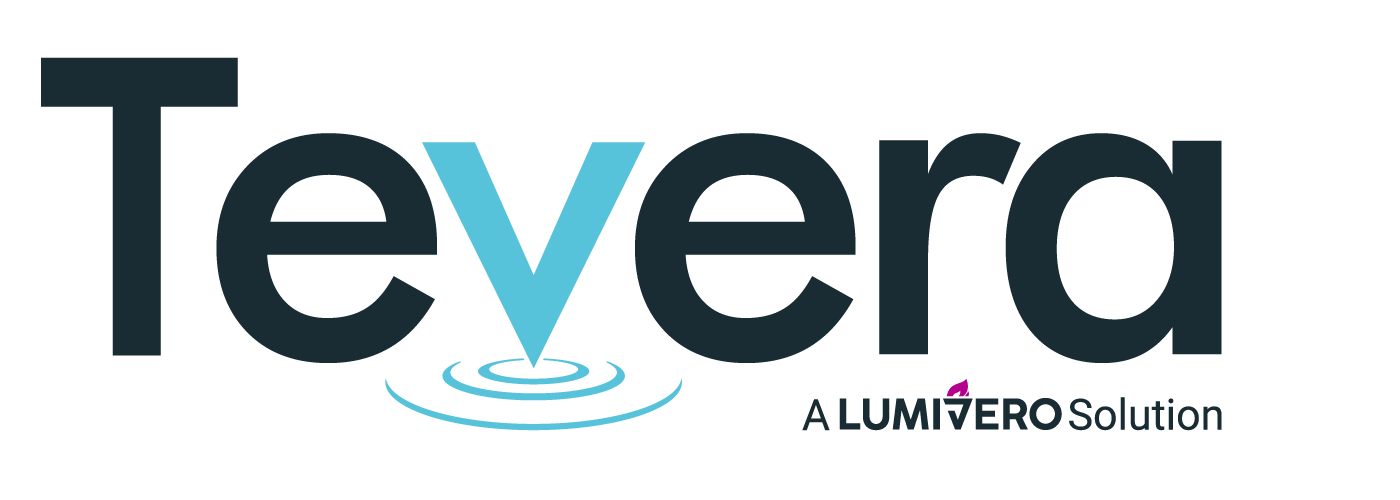NCATE Accreditation Requirements and Standards
As educator-preparation programs and schools provide instruction and experience to future teachers and education professionals, they’re expected to do so at a standard level of quality to ensure their candidates are learning what they need to be successful. Beginning in the early 1950s, NCATE was the leading accreditor of education standards in colleges and educational institutions. Since then, accreditation standards have evolved and new accrediting bodies have taken responsibility.
Between 2010 and 2013, the Council for the Accreditation of Educator Preparation (CAEP) was formed, combining NCATE and the Teacher Education Accreditation Council (TEAC). Learn more about the history of NCATE and where education programs stand regarding CAEP.
What is NCATE Accreditation?
The National Council for Accreditation of Teacher Education (NCATE) was an accrediting agency for DOE- and CHEA-recognized colleges, schools and education departments. Accrediting teacher preparation programs for over 50 years, NCATE established ratings for high-quality teacher, administrator and specialist preparation.
Until merging into CAEP, the U.S. Department of Education (DoE) recognized NCATE as an independent organization that ensured prospective teachers graduating from educator preparation institutions were fully prepared to teach young students.
What are NCATE Standards?
To ensure the quality of educator preparation providers (EPPs), NCATE accreditation standards required educators to demonstrate the skills, knowledge and professional disposition to work with kids of various backgrounds. To earn NCATE accreditation status, institutions and educational programs had to prove they were preparing their students to meet these requirements. This process typically involved NCATE accreditation reporting, which required education programs to track and report their compliance with NCATE standards.
NCATE established standards for what a high-quality education program or school looked like. While NCATE standards are no longer used to accredit schools, they served as a basis for future accrediting bodies like CAEP. Similar to NCATE reporting, CAEP and other accrediting bodies for various types of schools also require accreditation reporting.
While CAEP standards embody the same goals as NCATE, they differ as CAEP has made updates to reflect current education needs.
Implementing CAEP Standards
Schools that originally held NCATE accreditation status could keep their status until the end of the accreditation period. Once the NCATE accreditation period terminates, education programs that want to maintain accreditation must implement compliance with CAEP standards. Today, CAEP standards are primarily used to accredit educator preparation programs. CAEP has the same mission NCATE had — to ensure teachers receive the highest level of preparation and education before entering the workforce.
While CAEP standards embody the same goals as NCATE, they differ as CAEP made updates to reflect current education needs. CAEP standards are reviewed at least every seven years to ensure any changes in the education system are accounted for in how education programs prepare future educators. While you should have a deep understanding of CAEP standards as your program earns and maintains accreditation, here’s a glance at each of the seven CAEP standards:
- Content and pedagogical knowledge: EPPs ensure their program’s candidates thoroughly learn their discipline’s principles and concepts through experiences and curriculum, enabling them to understand student culture and needs while integrating diversity and equity.
- Clinical partnerships and practice: EEPs must choose high-quality and effective clinical practices and partnerships to prepare candidates. These should involve field experiences in various settings and with diverse schools and students so candidates can develop their professional dispositions, knowledge and other skills.
- Candidate recruitment, progression and support: This standard ensures EPPs support candidates with continuous focus from recruitment through graduation. Candidates should have access to mentoring, advising and remediation during all phases of their education.
- Program impact: EPPs can demonstrate the program’s completers’ effectiveness in student development and learning. The completer and their future employer should also be satisfied with the effectiveness and relevancy of the completer’s preparation.
- Quality assurance and continuous improvement: EPPs must implement and maintain a quality assurance system using real data collected through various measures. Data collection is then used for evidence-based program improvement.
- Administrative and fiscal capacity: EPPs must have the capacity, infrastructure and faculty necessary to prepare program candidates properly in compliance with this standard unless accredited by another U.S. Secretary of Education-recognized accreditor.
- Compliance with Title IV of the Higher Education Act: EPPs must fully comply with Title IV, including program reviews and compliance and financial audits. Providers will also need to provide evidence for each part of this standard.
CAEP Accreditation Process
The CAEP accreditation process involves several stages from application to the final decision. After applying to be considered for CAEP accreditation, you’ll generally face the following processes:
- Program and state review: The state will review your program to evaluate the effectiveness of your program’s preparation and content regarding various education fields.
- Self-study: Using the data collected through your quality assurance system, you’ll submit a self-study report to prove that your program meets CAEP standards.
- Formative review: Trained CAEP peer reviewers will review your program’s self-study to determine the extent and quality of the evidence provided. The team will also determine a focus for the site visit that is to follow.
- Site visit: Next, the review team will visit your institution for two to three days, verifying evidence, reviewing data, and examining student work, lesson plans and more. The review team will also conduct interviews with relevant program members. After the visit, the team will submit a report containing an evaluation of compliance with CAEP standards.
- Final review and decision: The CAEP Accreditation Council reviews the evidence and reports your program and the review team provided to make a final accreditation decision.
How Tevera Helps Colleges Earn and Maintain CAEP Accreditation
After earning CAEP accreditation, your program will be expected to maintain compliance with CAEP standards to keep its accreditation. CAEP-accredited colleges must also submit annual reports, helping CAEP track compliance between follow-up visits. While tracking the necessary data and writing the reports necessary to earn and maintain CAEP accreditation isn’t difficult, it can be time-consuming.
With a field experience and outcomes management platform like Tevera, your program can effectively and efficiently track CAEP standard compliance, generate accreditation reports, program outcomes and more. You’ll also gain increased visibility and insights into your program’s performance, allowing you to drive student success.
Simplify CAEP Accreditation with Tevera
At Tevera, we offer numerous capabilities and features that enable your CAEP-accredited program to easily and effectively maintain your accreditation status. From pairing students with the best field placements and tracking their progress to tracking data and generating accreditation reports, Tevera displays your information in easily accessible dashboards. Your students can even track their progress themselves, helping you meet standards and effectively prepare them for their field.
We’ll help you improve program outcomes and field experience while maintaining CAEP accreditation. Book an overview of our platform to learn more about using Tevera in your program.
Interested in Learning About Other Accreditation Bodies Tevera Supports?
SOLUTIONS
RELATED POSTS
PRODUCT OVERVIEW
See how Tevera can elevate your program.
NCATE Accreditation Requirements and Standards
As educator-preparation programs and schools provide instruction and experience to future teachers and education professionals, they’re expected to do so at a standard level of quality to ensure their candidates are learning what they need to be successful. Beginning in the early 1950s, NCATE was the leading accreditor of education standards in colleges and educational institutions. Since then, accreditation standards have evolved and new accrediting bodies have taken responsibility.
Between 2010 and 2013, the Council for the Accreditation of Educator Preparation (CAEP) was formed, combining NCATE and the Teacher Education Accreditation Council (TEAC). Learn more about the history of NCATE and where education programs stand regarding CAEP.
What is NCATE Accreditation?
The National Council for Accreditation of Teacher Education (NCATE) was an accrediting agency for DOE- and CHEA-recognized colleges, schools and education departments. Accrediting teacher preparation programs for over 50 years, NCATE established ratings for high-quality teacher, administrator and specialist preparation.
Until merging into CAEP, the U.S. Department of Education (DoE) recognized NCATE as an independent organization that ensured prospective teachers graduating from educator preparation institutions were fully prepared to teach young students.
What are NCATE Standards?
To ensure the quality of educator preparation providers (EPPs), NCATE accreditation standards required educators to demonstrate the skills, knowledge and professional disposition to work with kids of various backgrounds. To earn NCATE accreditation status, institutions and educational programs had to prove they were preparing their students to meet these requirements. This process typically involved NCATE accreditation reporting, which required education programs to track and report their compliance with NCATE standards.
NCATE established standards for what a high-quality education program or school looked like. While NCATE standards are no longer used to accredit schools, they served as a basis for future accrediting bodies like CAEP. Similar to NCATE reporting, CAEP and other accrediting bodies for various types of schools also require accreditation reporting.
While CAEP standards embody the same goals as NCATE, they differ as CAEP has made updates to reflect current education needs.
Implementing CAEP Standards
Schools that originally held NCATE accreditation status could keep their status until the end of the accreditation period. Once the NCATE accreditation period terminates, education programs that want to maintain accreditation must implement compliance with CAEP standards. Today, CAEP standards are primarily used to accredit educator preparation programs. CAEP has the same mission NCATE had — to ensure teachers receive the highest level of preparation and education before entering the workforce.
While CAEP standards embody the same goals as NCATE, they differ as CAEP made updates to reflect current education needs. CAEP standards are reviewed at least every seven years to ensure any changes in the education system are accounted for in how education programs prepare future educators. While you should have a deep understanding of CAEP standards as your program earns and maintains accreditation, here’s a glance at each of the seven CAEP standards:
- Content and pedagogical knowledge: EPPs ensure their program’s candidates thoroughly learn their discipline’s principles and concepts through experiences and curriculum, enabling them to understand student culture and needs while integrating diversity and equity.
- Clinical partnerships and practice: EEPs must choose high-quality and effective clinical practices and partnerships to prepare candidates. These should involve field experiences in various settings and with diverse schools and students so candidates can develop their professional dispositions, knowledge and other skills.
- Candidate recruitment, progression and support: This standard ensures EPPs support candidates with continuous focus from recruitment through graduation. Candidates should have access to mentoring, advising and remediation during all phases of their education.
- Program impact: EPPs can demonstrate the program’s completers’ effectiveness in student development and learning. The completer and their future employer should also be satisfied with the effectiveness and relevancy of the completer’s preparation.
- Quality assurance and continuous improvement: EPPs must implement and maintain a quality assurance system using real data collected through various measures. Data collection is then used for evidence-based program improvement.
- Administrative and fiscal capacity: EPPs must have the capacity, infrastructure and faculty necessary to prepare program candidates properly in compliance with this standard unless accredited by another U.S. Secretary of Education-recognized accreditor.
- Compliance with Title IV of the Higher Education Act: EPPs must fully comply with Title IV, including program reviews and compliance and financial audits. Providers will also need to provide evidence for each part of this standard.
CAEP Accreditation Process
The CAEP accreditation process involves several stages from application to the final decision. After applying to be considered for CAEP accreditation, you’ll generally face the following processes:
- Program and state review: The state will review your program to evaluate the effectiveness of your program’s preparation and content regarding various education fields.
- Self-study: Using the data collected through your quality assurance system, you’ll submit a self-study report to prove that your program meets CAEP standards.
- Formative review: Trained CAEP peer reviewers will review your program’s self-study to determine the extent and quality of the evidence provided. The team will also determine a focus for the site visit that is to follow.
- Site visit: Next, the review team will visit your institution for two to three days, verifying evidence, reviewing data, and examining student work, lesson plans and more. The review team will also conduct interviews with relevant program members. After the visit, the team will submit a report containing an evaluation of compliance with CAEP standards.
- Final review and decision: The CAEP Accreditation Council reviews the evidence and reports your program and the review team provided to make a final accreditation decision.
How Tevera Helps Colleges Earn and Maintain CAEP Accreditation
After earning CAEP accreditation, your program will be expected to maintain compliance with CAEP standards to keep its accreditation. CAEP-accredited colleges must also submit annual reports, helping CAEP track compliance between follow-up visits. While tracking the necessary data and writing the reports necessary to earn and maintain CAEP accreditation isn’t difficult, it can be time-consuming.
With a field experience and outcomes management platform like Tevera, your program can effectively and efficiently track CAEP standard compliance, generate accreditation reports, program outcomes and more. You’ll also gain increased visibility and insights into your program’s performance, allowing you to drive student success.
Simplify CAEP Accreditation with Tevera
At Tevera, we offer numerous capabilities and features that enable your CAEP-accredited program to easily and effectively maintain your accreditation status. From pairing students with the best field placements and tracking their progress to tracking data and generating accreditation reports, Tevera displays your information in easily accessible dashboards. Your students can even track their progress themselves, helping you meet standards and effectively prepare them for their field.
We’ll help you improve program outcomes and field experience while maintaining CAEP accreditation. Book an overview of our platform to learn more about using Tevera in your program.
Interested in Learning About Other Accreditation Bodies Tevera Supports?
NCATE Accreditation Requirements and Standards
As educator-preparation programs and schools provide instruction and experience to future teachers and education professionals, they’re expected to do so at a standard level of quality to ensure their candidates are learning what they need to be successful. Beginning in the early 1950s, NCATE was the leading accreditor of education standards in colleges and educational institutions. Since then, accreditation standards have evolved and new accrediting bodies have taken responsibility.
Between 2010 and 2013, the Council for the Accreditation of Educator Preparation (CAEP) was formed, combining NCATE and the Teacher Education Accreditation Council (TEAC). Learn more about the history of NCATE and where education programs stand regarding CAEP.
What is NCATE Accreditation?
The National Council for Accreditation of Teacher Education (NCATE) was an accrediting agency for DOE- and CHEA-recognized colleges, schools and education departments. Accrediting teacher preparation programs for over 50 years, NCATE established ratings for high-quality teacher, administrator and specialist preparation.
Until merging into CAEP, the U.S. Department of Education (DoE) recognized NCATE as an independent organization that ensured prospective teachers graduating from educator preparation institutions were fully prepared to teach young students.
What are NCATE Standards?
To ensure the quality of educator preparation providers (EPPs), NCATE accreditation standards required educators to demonstrate the skills, knowledge and professional disposition to work with kids of various backgrounds. To earn NCATE accreditation status, institutions and educational programs had to prove they were preparing their students to meet these requirements. This process typically involved NCATE accreditation reporting, which required education programs to track and report their compliance with NCATE standards.
NCATE established standards for what a high-quality education program or school looked like. While NCATE standards are no longer used to accredit schools, they served as a basis for future accrediting bodies like CAEP. Similar to NCATE reporting, CAEP and other accrediting bodies for various types of schools also require accreditation reporting.
While CAEP standards embody the same goals as NCATE, they differ as CAEP has made updates to reflect current education needs.
Implementing CAEP Standards
Schools that originally held NCATE accreditation status could keep their status until the end of the accreditation period. Once the NCATE accreditation period terminates, education programs that want to maintain accreditation must implement compliance with CAEP standards. Today, CAEP standards are primarily used to accredit educator preparation programs. CAEP has the same mission NCATE had — to ensure teachers receive the highest level of preparation and education before entering the workforce.
While CAEP standards embody the same goals as NCATE, they differ as CAEP made updates to reflect current education needs. CAEP standards are reviewed at least every seven years to ensure any changes in the education system are accounted for in how education programs prepare future educators. While you should have a deep understanding of CAEP standards as your program earns and maintains accreditation, here’s a glance at each of the seven CAEP standards:
- Content and pedagogical knowledge: EPPs ensure their program’s candidates thoroughly learn their discipline’s principles and concepts through experiences and curriculum, enabling them to understand student culture and needs while integrating diversity and equity.
- Clinical partnerships and practice: EEPs must choose high-quality and effective clinical practices and partnerships to prepare candidates. These should involve field experiences in various settings and with diverse schools and students so candidates can develop their professional dispositions, knowledge and other skills.
- Candidate recruitment, progression and support: This standard ensures EPPs support candidates with continuous focus from recruitment through graduation. Candidates should have access to mentoring, advising and remediation during all phases of their education.
- Program impact: EPPs can demonstrate the program’s completers’ effectiveness in student development and learning. The completer and their future employer should also be satisfied with the effectiveness and relevancy of the completer’s preparation.
- Quality assurance and continuous improvement: EPPs must implement and maintain a quality assurance system using real data collected through various measures. Data collection is then used for evidence-based program improvement.
- Administrative and fiscal capacity: EPPs must have the capacity, infrastructure and faculty necessary to prepare program candidates properly in compliance with this standard unless accredited by another U.S. Secretary of Education-recognized accreditor.
- Compliance with Title IV of the Higher Education Act: EPPs must fully comply with Title IV, including program reviews and compliance and financial audits. Providers will also need to provide evidence for each part of this standard.
CAEP Accreditation Process
The CAEP accreditation process involves several stages from application to the final decision. After applying to be considered for CAEP accreditation, you’ll generally face the following processes:
- Program and state review: The state will review your program to evaluate the effectiveness of your program’s preparation and content regarding various education fields.
- Self-study: Using the data collected through your quality assurance system, you’ll submit a self-study report to prove that your program meets CAEP standards.
- Formative review: Trained CAEP peer reviewers will review your program’s self-study to determine the extent and quality of the evidence provided. The team will also determine a focus for the site visit that is to follow.
- Site visit: Next, the review team will visit your institution for two to three days, verifying evidence, reviewing data, and examining student work, lesson plans and more. The review team will also conduct interviews with relevant program members. After the visit, the team will submit a report containing an evaluation of compliance with CAEP standards.
- Final review and decision: The CAEP Accreditation Council reviews the evidence and reports your program and the review team provided to make a final accreditation decision.
How Tevera Helps Colleges Earn and Maintain CAEP Accreditation
After earning CAEP accreditation, your program will be expected to maintain compliance with CAEP standards to keep its accreditation. CAEP-accredited colleges must also submit annual reports, helping CAEP track compliance between follow-up visits. While tracking the necessary data and writing the reports necessary to earn and maintain CAEP accreditation isn’t difficult, it can be time-consuming.
With a field experience and outcomes management platform like Tevera, your program can effectively and efficiently track CAEP standard compliance, generate accreditation reports, program outcomes and more. You’ll also gain increased visibility and insights into your program’s performance, allowing you to drive student success.
Simplify CAEP Accreditation with Tevera
At Tevera, we offer numerous capabilities and features that enable your CAEP-accredited program to easily and effectively maintain your accreditation status. From pairing students with the best field placements and tracking their progress to tracking data and generating accreditation reports, Tevera displays your information in easily accessible dashboards. Your students can even track their progress themselves, helping you meet standards and effectively prepare them for their field.
We’ll help you improve program outcomes and field experience while maintaining CAEP accreditation. Book an overview of our platform to learn more about using Tevera in your program.





















